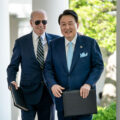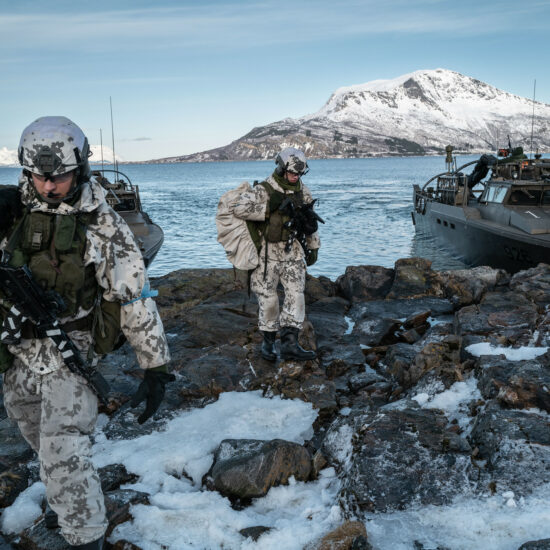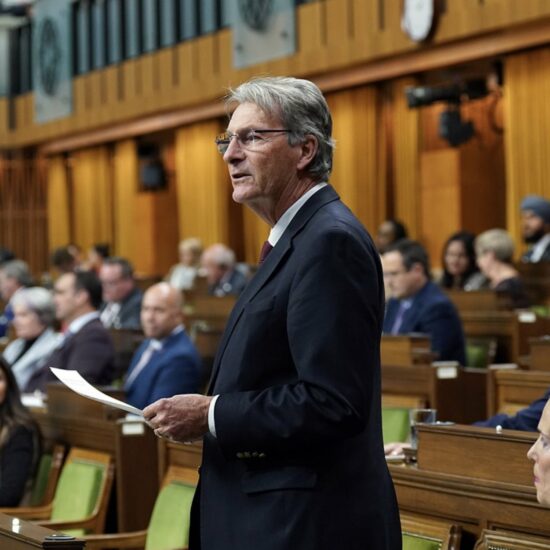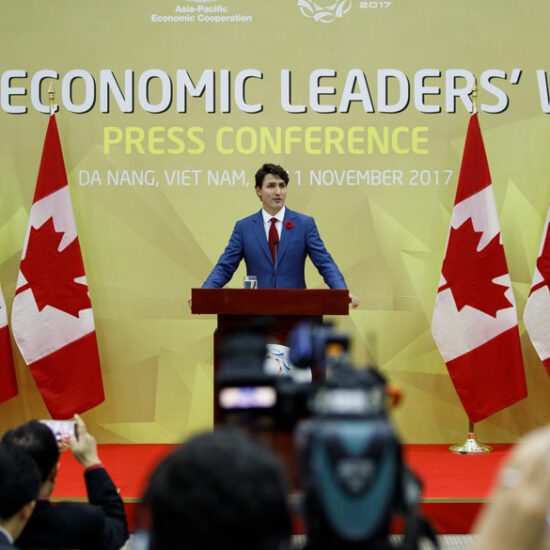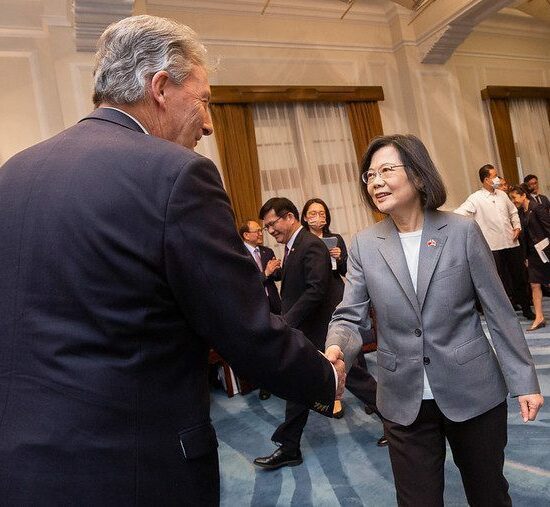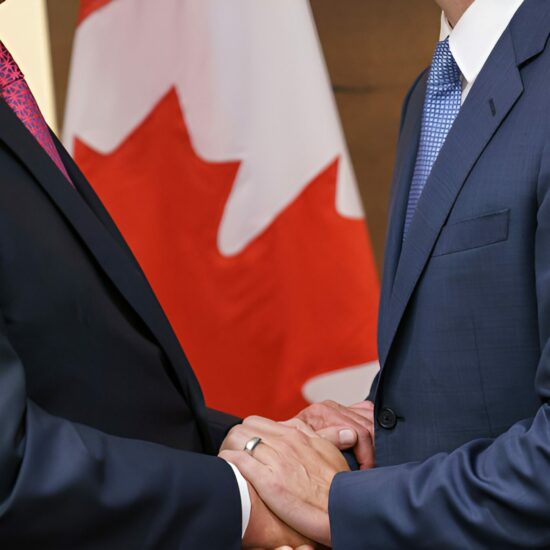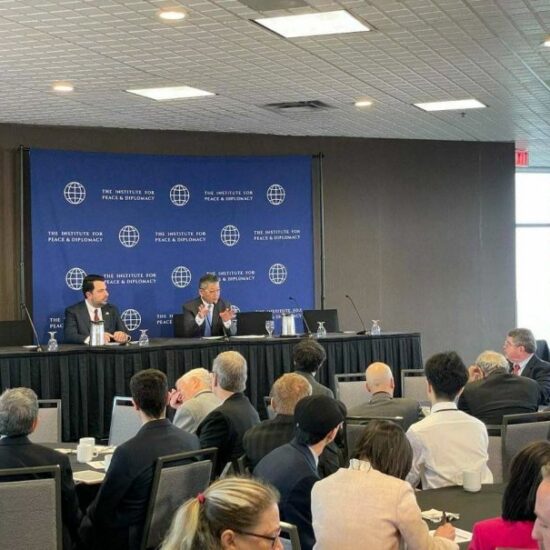
By Wenran Jiang
This paper is published as part of a series under IPD’s China Strategy Project.
A Worsened Relationship: Room for Manoeuvre?
The release of Huawei CFO Meng Wanzhou by the Canadian government and Michael Kovrig and Michael Spavor by the Chinese authorities in September 2021 ended nearly three years of tense relations between the two countries. Yet, after one year, there has been little indication that bilateral ties will return to normal any time soon.
On the Canadian side, there is a lingering bitterness about the imprisonment of the ’two Michaels’. Public opinion remains predominantly negative towards China. Prime Minister Justin Trudeau has finally appointed a new ambassador to Beijing to replace Dominic Barton, who resigned at the end of 2021. The minority Liberal government has resisted calls from the business community to resume higher-level dialogues with Beijing. Instead, it announced a ban on Huawei and other Chinese high-tech companies from participating in Canada’s 5G networks.
Ottawa has become more active in pursuing relations with China’s neighbouring countries such as India, ASEAN, Japan and South Korea, even flirting with closer ties with Taiwan by sending its top diplomat in Beijing to Taipei. But there remains very little strategic clarity on China policy. In the absence of an overall Canadian foreign policy framework, the work-in-progress ‘Indo-Pacific Strategy’, as announced by foreign minister Melanie Joly a few months ago, may not bring the necessary guidance to a new China policy.
On the Chinese side, there is not much eagerness to take major initiatives to restore damaged relations, even if pragmatism seems to have led to the lifting of a major ban on canola imports from Canada. Beijing criticized Canada’s decision to ban Huawei and other steps Ottawa took jointly with its Western allies that were seen as hostile to China.
Yet there also appears to be a strategic calculation that in the confrontation between the world’s two superpowers, one way of weakening the United States is not to push its allies closer to Washington, even if Beijing has imposed counter-measures against US allies when some took steps considered as ‘crossing a red line’. Thus, despite the worst diplomatic relations between Canada and China in recent years since the establishment of diplomatic relations in 1970, bilateral trade growth has set new records in recent years. There is little evidence that Beijing is weaponizing trade in dealing with Ottawa, perhaps a lesson it learned from President Trump’s trade war against China that such foreign policy measures produce no winners.
Against such a backdrop of ‘cool politics, warm economics’ in bilateral ties, it is worth asking the question: What are the areas where both sides should work together in a proactive way that serves the interests of both countries, while not being perceived as overly keen in pleasing the other side? This paper presents a proposal in one particular area of cooperation in energy and environment that will not only benefit both Canada and China, but the global climate change agenda in particular.
From the Canadian side, the following conditions need to be met. First, when it comes to policy specific to China and the ‘Indo-Pacific’, the Trudeau government may only consider potential options along the lines of a number of ‘Cs:’ confrontation and competition where needed, and cooperation when necessary. But it can still get creative in pursuing what it considers a progressive agenda, especially in the area of combating climate change.
Second, the Canadian public must view the chosen area of cooperation as not only benefiting Canada economically and politically, but also serving a much bigger public good with global significance. Otherwise, there is little appetite for supporting it, thus not providing enough legitimacy for Trudeau to pursue it.
Third, the Conservatives, who thus far have been a major driving force in setting a hostile China policy, need to be behind efforts in which Canada and China work closer. In a parliament where the Liberals are a minority, the Conservatives have turned China policy into a partisan tool to attack the Trudeau cabinet.
Fourth, the new initiative must be able to satisfy Canada’s press, which has turned more critical toward China in its coverage in recent years, increasingly dominated by negative stories and one-sided commentaries that do not capture the entire sociopolitical complexity of modern China, and how this intersects with international relations writ large.
Finally, the selected area of cooperation should not raise alarm bells in Washington, and ideally even get American (tacit) approval.
The Energy-Environment Nexus
Taking together the above five preconditions, quite a number of areas of potential cooperation are either eliminated or significantly constrained, even though they are important sectors in Canada-China economic relations. The high-tech sector will be too sensitive to national security following the Huawei ban and will be furiously opposed by the Conservatives. The education sector, traditionally a strength of Canada, is now considered risky with accusations of Chinese scholars and students being potential spies for the Chinese government (accusations without merit or proof).
The infrastructure/construction sector, originally not a national security concern but being hyped into one in recent years, is unlikely to get backing, either in China’s Belt & Road Initiative (BRI) through the Asian Infrastructure Investment Bank (AIIB) or potential Chinese investment in Canada’s construction industry, as evidenced by the rejection of China Communications Construction Co. (CCCC)’s bid to acquire the Canadian infrastructure company Aecon Group by the Canadian government in 2018.
Agriculture, forestry and minerals are considered sectors of normal trade driven by market forces, generating little public or political support for taking them up as key initiatives, even if they are also seen by hardliners as potential natural security concerns in a future decoupled world with China.
This narrows the list down to one particular area that satisfies all of the conditions: energy and environment. When I began working with the Liberal government under then Prime Minister Paul Martin to start an annual bilateral energy and environment dialogue in 2004, the objective was more geared towards exploring the fast-growing Chinese market for energy and addressing concerns that the Canadian energy exporting market was solely dependent on the United States.
Later on, the Obama administration delayed the approval of the Keystone XL pipeline for the first time in 2008, a move that agitated Prime Minister Stephen Harper. Coming to power in 2006 but remaining distant from China, Harper traveled to Beijing for the first time in 2009 to seek energy cooperation and Chinese investment in Canada’s energy sector, witnessing a burst of more than $40 billion in Chinese capital rushing into the energy sector in Western Canada over the following few years.
But then as now, extracting and selling more fossil energy divides Canadians. Nationwide, environmentalists are vocal opponents. Geographically, Western Canada is more in favour of energy development than Eastern Canada. Politically, the Conservatives are advocates, with the NDP and Greens in opposition while the Liberals want to limit the fossil fuel industry with a long-term goal of phasing it out as a major pillar of the Canadian economy. But even the Harper cabinet, after promoting Chinese investment, got concerned about potential Chinese control of too much of Canada’s energy sector, and began to limit Chinese capital after approving the CNOOC’s $15 billion takeover of Nexen in 2013. This dynamic has not changed since the Liberals came to power in late 2015.
Given recent tensions between Ottawa and Beijing, more and more people have come to realize that producing more oil and gas, and selling them to China for the purpose of more revenue or for diversification from the US market, cannot have sustained support. Therefore, energy engagement with China must also have a corresponding environmental agenda, or an ‘energy-environment nexus’. The logic of a Canada-China energy-environment nexus is that Canada’s energy relations with China should not be treated simply as trade to increase our market share beyond North America. Rather, the supply of Canadian oil and natural gas in the form of LNG should be linked to overall Chinese efforts in reducing the use of coal.
For many years, the Chinese government has struggled to curb the use of coal in its rapid modernization process. China is the largest user of coal in the world and a major part of its CO2 emissions come from the use of coal. Studies have shown that before the world reaches the stage where renewable and other non-fossil energy sources can take over traditional energy sources, there has to be a transitional period, during which oil, especially gas and LNG can play a role in replacing coal if properly managed to mitigate related negative impacts. This will not be emission-free but will lead to significant decreases in CO2 emissions.
Despite many years of efforts to eliminate them, China still has many coal-generated power plants. Replacing them with gas or LNG will lead to a reduction in CO2 emissions of between 25 to 50 percent, depending on the efficiency of the original coal power plants. China simply does not have enough alternatives, with the share of natural gas and LNG in its energy mix much lower than other major global consumers. Thus, unlike the progressive trade agenda Prime MinisterTrudeau proposed that is partly responsible for the derailed free trade talks with China, a Canadian proposal to send large quantities of LNG to China will be welcomed as it will help Beijing to meet two strategically committed UN targets: reducing coal use and the promise of carbon neutrality by 2030.
The rationale for an energy-environment nexus is further supported by the urgent call in recent years that more action must be taken to curb greenhouse gases, especially by the largest emitters and rich countries, or the moderate targets set by the Paris climate conference to limit global temperature increases will not be met.
The International Energy Agency (IEA) has recognized that the key to such an effort is reducing the use of coal, and in its 2017 World Energy Outlook stated China’s central role when it comes to meeting global CO2 emission targets: “When China changes, everything changes.”
While China today is no doubt the largest CO2-emitting country on earth, its per capita emissions remain significantly below that of other developed nations. Nor does China, like all other developing countries, bear much responsibility when it comes to the historical accumulation of emissions. China is now the factory of the world and it has the industrial manufacturing capacity of all the G7 countries combined.
Over the past several decades, when Western capital was moving to the parts of the world where it could get the best return as part of the process of globalization, heavily energy-consuming and CO2-emitting industries were moved to China and other developing countries. As a result, Western politicians in Europe, North America and other parts of the world claim credit for their respective countries’ ‘achievements’ in meeting the Kyoto Protocol obligations. China, India and other developing countries got blamed for increased emissions while producing for rich countries. Overall global CO2 emissions have been shifting geographically around the world but keep going up.
When young environmentalists in British Columbia passionately argued against the LNG Canada project in order to keep the province’s emissions below its set ceiling, their dedication and commitment to a better world should be praised. But unless total, aggregate global emissions are decreasing, the local targets – be it a city, a country, a province or a state – mean very little.
Take LNG Canada: its extraction and production of LNG in Western Canada may lead BC to break its provincial CO2 emission ceiling in the coming years. But when the LNG is being exported to China, replacing the coal-burning power plants, as planned and expected between Shell Canada and its Chinese and other Asian partners, the global math leads to a net reduction of total emissions, compensating BC’s local emission target by contributing to global deductions. By understanding the internal logic of the environment part of the energy-environment nexus, we then can truly understand the meaning of ‘think global, act local’ when it comes to climate change.
What Needs to Be Done?
If we look at the tremendous challenges in meeting the Paris Conference targets, the current chill of Canada’s political and diplomatic relations with China should not be a barrier for the two countries to work together in pursuing energy efficiency, climate change collaboration and especially finding innovative ways of replacing China’s coal use by other less harmful means to the environment and reducing CO2 emissions on a large scale.
Cooperation between the two countries along the logic of the energy-environment nexus would meet the five conditions outlined earlier for generating support within Canada. The Trudeau cabinet has not been a strong supporter of expanding fossil energy production and the party has a strong internal push for a green agenda on climate policies. This is a chance for the Liberals to have a vision on the global stage and be a leader in engaging China when US-China relations are at a stage of almost no contact, including in the area of climate cooperation.
The Canadian public can be informed to see not only the gains of increased trade with China in Canada’s potential export of its energy products but also the related environmental benefits, especially when these activities contribute to emission controls at the global level.
The Conservatives are traditionally supporters of more energy production in the West and exporting it to China. Former Prime Minister Harper, although a firm advocate of banning Huawei, has been supportive of exploring China and Asian markets for Canada’s energy diversification drive over the years, including having discussed this subject in an on-stage conversation with me in Beijing in 2017. Media coverage may highlight arguments which affirm the importance of such cooperation for the global common good. And the Biden administration, which has been busy putting together multiple packages together with its allies around the world to contain China, has seen climate cooperation with Beijing as something non-threatening and may even use Canada as a bridge to reach out to China when its own bridges to Beijing are burned in the wake of House Speaker Nancy Pelosi’s visit to Taiwan.
To make such an initiative operational, some bold vision and a number of concrete policy steps are required. First, Prime Minister Justin Trudeau and his cabinet need to think in terms of the global climate agenda rather than being bound by the current state of bilateral relations. There is still a lingering sense of bitterness in Ottawa over the nearly three years detention of the ‘two Michaels’. Phrases like “we do not forget and we do not forgive” often come up when discussing Canada’s China policy plans. The anger is understandable. But anger is not policy and emotions are no guide for rational policymaking. PM Trudeau can act with a vision and break the ice with China’s top leadership by reaching out with some energy and environment project proposals that demonstrate statesmanship in the interest of the global common good.
Second, as discussed above, Canada should not simply propose an energy collaboration or trade initiative to China. Energy-producing countries all over the world want to sell oil, gas and LNG to China. Despite holding one of the largest oil and gas reserves in the world, Canada has so far not shown up in China’s energy import chart due to the fact that almost all of Canada’s pipeline infrastructure has been routed to the US. There is no doubt that Beijing wants to have diversified sources of imports for ‘supply security’ while Ottawa wants to have more ‘demand security’ if only looking at energy trade market dynamics.
The US used to be alarmed about Canada trying to diversify its energy market to China, but with the US itself producing enough oil and gas, and turning into an exporter, locking up Canadian energy is no longer a supply security issue as it once was. However, none of the existing countries that export large quantities of oil and gas to China, such as Saudi Arabia and Russia, have an environmental or climate change component to their energy trade relations.
A Canadian proposal, especially in linking potentially large-scale LNG exports to China to replace the latter’s power plants using coal now, may get a very positive response given the Chinese priority of reducing their reliance on coal. PM Trudeau articulated exactly this point when he announced the government’s approval of the $40 billion LNG Canada project in 2018, the largest private sector investment in Canadian history:
LNG Canada will have the lowest carbon intensity of any large-scale LNG facility in the world. We know LNG produces about half the amount of carbon emissions as coal. So by sending Canadian LNG to markets that are today powered by coal, we will help those jurisdictions transition away from this energy source.
Against this backdrop, a more comprehensive proposal to China should be made as part of a joint effort in meeting the Paris Agreement goals.
Third, Canada’s ‘Indo-Pacific Strategy’ currently under development should include this area of cooperation with China as an important component. An engagement strategy on energy and environment with China cannot take place under conditions in which Ottawa treats China as a potential enemy, as demonstrated by the case of US-China relations: Beijing has refused to deal with Washington on climate change-related issues in response to escalating tensions over Taiwan. It perceives that the US is defining China as an adversary, yet simultaneously wanting to pick and choose what areas it wants to contain China and what areas it wants to work with it. Although important disagreements will persist in the Canada-China relationship, sustainable cooperation will depend on a commitment to identify shared interests in select spheres, rather than one side attempting to set the agenda unilaterally.
Under a more comprehensive engagement framework, Ottawa and Beijing should set up a ministerial-level mechanism to work out a package deal, with Canada taking the lead, potentially taking in other LNG-producing and exporting countries such as the United States, Australia and Qatar over time. While currently both natural gas and LNG are in short supply due to the Russian invasion of Ukraine, the long-term dynamic of replacing coal with gas, LNG and other renewable energy sources will not change as a solution for preventing the global temperature from rising beyond UN-defined goals.
Finally, the federal initiative should seek domestic support from provincial governments, from institutions that have rich experience in bilateral engagement on energy and environmental issues over the years, and from the private sector. This will serve to form a working network that is not an empty talk shop (as some of the existing mechanisms are) but rather is aimed at well-defined deliverables.
Dr. Wenran Jiang (@wenranj) is the President of the Canada-China Energy & Environment Forum. A retired political science professor and the founding director of the China Institute at the University of Alberta, he now serves as an advisor in IPD’s East Asia Program.

